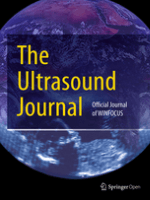
Ultrasound Journal
Scope & Guideline
Transforming Healthcare Through Innovative Ultrasound Research
Introduction
Aims and Scopes
- Point-of-Care Ultrasound (POCUS) Applications:
The journal emphasizes the growing role of POCUS in emergency and critical care settings, highlighting its use in real-time diagnostics and decision-making. - Educational Innovations in Ultrasound:
There is a significant focus on the development and evaluation of ultrasound training programs, aiming to enhance the skills of healthcare providers in various settings. - Integration of Technology in Ultrasound:
The journal explores the integration of artificial intelligence and advanced imaging techniques into ultrasound practices, examining how these technologies can improve diagnostic accuracy and patient outcomes. - Clinical Research and Outcomes:
A core area of focus is the clinical implications of ultrasound findings, particularly in critical care, cardiology, and emergency medicine, with an emphasis on studies that correlate ultrasound results with patient management and outcomes. - Innovative Ultrasound Techniques:
The journal features research on novel ultrasound techniques and protocols that improve diagnostic capabilities, such as contrast-enhanced ultrasound and specialized sonographic assessments.
Trending and Emerging
- Artificial Intelligence in Ultrasound:
There is a growing trend in research that incorporates artificial intelligence to enhance ultrasound diagnostics, improve image analysis, and automate processes, reflecting the broader trend of digital transformation in healthcare. - Telemedicine and Remote Ultrasound Education:
The rise of telemedicine has led to increased research on remote ultrasound training and the use of tele-ultrasound for patient assessment, particularly in resource-limited settings. - Ultrasound in Managing COVID-19 Patients:
Emerging studies focus on the role of ultrasound in the management of patients with COVID-19, addressing its utility in monitoring lung conditions and guiding treatment decisions. - Multidisciplinary Applications of Ultrasound:
Research is increasingly exploring ultrasound's role across various specialties, including pediatrics, cardiology, and emergency medicine, highlighting its versatility and expanding applications. - Patient-Centered Outcomes and Quality Improvement:
There is a trend towards assessing how ultrasound impacts patient outcomes and quality of care, emphasizing evidence-based approaches to ultrasound utilization in clinical settings.
Declining or Waning
- Traditional Ultrasound Techniques:
Research focused on conventional ultrasound techniques is declining as newer, more advanced methodologies gain traction. This shift indicates a move towards innovative practices that enhance diagnostic capabilities. - General Educational Practices:
There appears to be a waning interest in broad educational strategies for ultrasound training, as the emphasis shifts towards more specialized and technology-driven educational approaches. - Non-POCUS Related Ultrasound Research:
Studies that do not directly relate to point-of-care applications are becoming less frequent, indicating a narrowing focus on practical applications of ultrasound in acute care settings. - Basic Research in Ultrasound Physics:
Research centered on the fundamental physics of ultrasound technology is less frequently published, as the field moves towards application-based studies that yield immediate clinical benefits.
Similar Journals
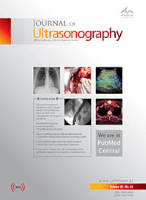
Journal of Ultrasonography
Pioneering Insights in Radiology and Ultrasound TechnologyJournal of Ultrasonography, published by SCIENDO, is a vital open-access platform for advancing knowledge and research in the fields of Radiology and Ultrasound Technology. Since its inception in 2013, this journal has provided a forum for practitioners and researchers to share innovative findings and critical insights, making it an essential resource for professionals in the medical imaging community. With an ISSN of 2084-8404 and an E-ISSN of 2451-070X, the journal aims to enhance clinical practice and foster academic growth through rigorous peer-reviewed publications. Notably, it has achieved a Q3 ranking in both Radiological and Ultrasound Technology and Radiology, Nuclear Medicine and Imaging, reflecting its commitment to quality and relevance. Based in Germany, it has also emerged as a significant contributor to the global discourse in medicine, currently ranked in the 39th percentile within its niche disciplines according to Scopus. The journal is uniquely positioned to serve as a conduit for innovative research, making it indispensable for researchers, healthcare practitioners, and students dedicated to the advancement of ultrasonography.
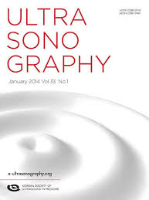
Ultrasonography
Connecting Researchers and Practitioners in UltrasoundUltrasonography is a prominent open-access journal published by the Korean Society of Ultrasound Medicine, dedicated to advancing the field of medical imaging and ultrasound technology. Since its inception in 2013, the journal has provided a platform for high-quality research, review articles, and advancements in ultrasonography, filling vital knowledge gaps in the radiology, nuclear medicine, and imaging sectors. With an impressive Q2 rank in its category for 2023 and a placement in the 71st percentile according to Scopus metrics, Ultrasonography serves as a crucial resource for researchers, practitioners, and students alike. Based in South Korea, it continues to attract a global audience by offering valuable insights into the latest techniques, technologies, and applications of ultrasound in clinical practice and diagnostics. Academics can access this comprehensive journal freely, fostering greater dissemination of knowledge in the ultrasound community.

Radiologie
Advancing Imaging Science for Better Patient OutcomesRadiologie, published by SPRINGER HEIDELBERG, is an emerging journal dedicated to the fields of radiology, nuclear medicine, and imaging. With an ISSN of 2731-7048 and E-ISSN 2731-7056, this journal does not currently offer open access, providing a traditional yet respected platform for scholarly communication. Founded in 2022, it aims to advance the understanding of cutting-edge imaging techniques and their applications in clinical practice, contributing to improvements in diagnostic accuracy and patient care. Despite its recent establishment, Radiologie is positioned within the Q4 quartile category, reflecting its developing presence in the academic landscape, with a current Scopus rank of #231 out of 333 in its category. The journal serves as a vital resource for researchers, professionals, and students seeking to stay abreast of the latest developments in radiological science, imaging technology, and their clinical implications, ensuring ongoing engagement and advancement in this critical area of healthcare.

ULTRASCHALL IN DER MEDIZIN
Illuminating Advances in Medical Imaging TechniquesULTRASCHALL IN DER MEDIZIN is a leading peer-reviewed journal published by GEORG THIEME VERLAG KG, focusing on advancements in the field of ultrasonography and its applications in medicine. With its strong presence in Germany, this journal has been instrumental in disseminating significant research findings since its inception in 1980, and it continues to be relevant through 2024. Recognized for its impact within the academic community, it holds a Q2 ranking in both Medicine (miscellaneous) and Radiology, Nuclear Medicine and Imaging, placing it in the top 25% of journals in these categories. The journal's Scopus rank of #84 out of 333 in its field further emphasizes its importance, reflecting the high-quality research it publishes. While it operates under traditional access options, ULTRASCHALL IN DER MEDIZIN remains a vital resource for researchers, healthcare professionals, and students aiming to stay updated on the latest ultrasonographic techniques and innovations that enhance patient care.
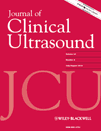
JOURNAL OF CLINICAL ULTRASOUND
Pioneering Insights in Ultrasound Technology and ApplicationJOURNAL OF CLINICAL ULTRASOUND, published by Wiley, is a prestigious scholarly journal dedicated to advancing the field of clinical ultrasound. With ISSN 0091-2751 and E-ISSN 1097-0096, this journal has been a significant contributor to the scientific community since its inception in 1973, with coverage extending through to 2024. It is recognized in Scopus, ranked #214 out of 333 in the category of Radiology, Nuclear Medicine and Imaging, placing it in the 35th percentile, and holds a Q3 quartile position as of 2023. The journal aims to disseminate high-quality research, reviews, and clinical studies that explore innovative ultrasound techniques and their application in various medical diagnoses and treatments. Although it is not open access, it remains an invaluable resource for researchers, professionals, and students seeking to stay at the forefront of ultrasound technology and clinical practice. Located in Hoboken, New Jersey, the JOURNAL OF CLINICAL ULTRASOUND continues to uphold its commitment to excellence in the field, inviting contributions that foster knowledge and application of ultrasound as a vital diagnostic tool in medicine.

Journal of Medical Ultrasound
Pioneering insights into the world of ultrasound.Welcome to the Journal of Medical Ultrasound, a premier open access journal published by Wolters Kluwer Medknow Publications since 2002, dedicated to advancing the field of medical imaging through the use of ultrasound technology. With an ISSN of 0929-6441 and an E-ISSN of 2212-1552, this journal has been a vital resource for researchers, professionals, and students in the fields of radiology, nuclear medicine, and imaging. Based in the vibrant city of Singapore, the journal has converged data across its publication years from 1994 to 2024, striving to disseminate high-quality research and innovative practices within the community. Despite its current Q4 ranking in 2023 with a Scopus rank of 240/333 in its category, the Journal of Medical Ultrasound continues to be a significant contributor to the discourse in medical imaging. Researchers seeking to share their findings and explore the latest advancements in ultrasound are encouraged to contribute to this evolving platform, which embraces a wide-ranging spectrum of studies and clinical applications in the realm of diagnostic imaging.

Radiologia Medica
Innovative Research Bridging Disciplines in Radiology.Radiologia Medica, published by Springer-Verlag Italia SRL, is a premier Italian journal dedicated to the field of radiology, nuclear medicine, and imaging. With a rich history dating back to 1947, this journal has consistently provided cutting-edge research and findings, contributing significantly to advancements in medical imaging techniques and practices. As evidenced by its impressive Q1 rankings in both Medicine (Miscellaneous) and Radiology, Nuclear Medicine and Imaging, Radiologia Medica holds a prestigious position within the top tier of medical journals, ranked #11 out of 333 in its category and residing in the 96th percentile according to Scopus metrics. Although it is not currently offered as an Open Access journal, its robust subscription model supports extensive research dissemination. Researchers, professionals, and students alike will find invaluable insights and knowledge critical for advancing their understanding and practice within this dynamic field. Situated in Milan, Italy, Radiologia Medica continues to be an influential platform for the exchange of high-quality research, bridging various disciplines and promoting excellence in radiological science.

Imaging
Advancing the Frontiers of Medical ImagingImaging, published by AKADEMIAI KIADO ZRT, is an esteemed open-access journal dedicated to the field of medical imaging, established in 2020. With an E-ISSN of 2732-0960 and based in Budapest, Hungary, this journal provides a vital platform for the dissemination of cutting-edge research and advancements in imaging techniques, especially in the realms of radiology, nuclear medicine, and ultrasound technology. While currently positioned in the Q4 category across multiple medical specialties, the journal continues to strive for improvements in visibility and impact, contributing to the evolving discourse in medical imaging. The journal aims to facilitate an inclusive and collaborative environment for researchers, professionals, and students, inviting them to share their findings and insights to enhance the field's development. With open-access availability since its inception, Imaging ensures free and easy access to its content, fostering a greater understanding and appreciation of innovative imaging practices worldwide.

Iranian Journal of Radiology
Empowering Professionals with Essential Radiology ResearchWelcome to the Iranian Journal of Radiology, a pivotal platform dedicated to advancing the field of radiology, nuclear medicine, and medical imaging. Published by BRIEFLAND, this journal aims to disseminate high-quality original research, reviews, and clinical studies that contribute substantially to the global scientific community. Established in 2008 and spanning until 2024, the journal provides an essential archive of knowledge in a rapidly evolving discipline. Although it currently holds a Q4 quartile ranking in the 2023 Scopus metrics, it serves as an important resource for both emerging and established researchers looking to submit their work. Located in the Netherlands, the journal is committed to open dialogue and collaboration amongst professionals in the field, reflecting its accessibility and relevance to both practitioners and academics. With its continued growth and commitment to quality, the Iranian Journal of Radiology is poised to enhance understanding and innovation in diagnostic imaging.
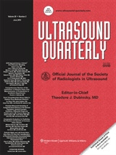
Ultrasound Quarterly
Connecting Professionals Through Cutting-Edge Research.Ultrasound Quarterly is a leading journal published by Lippincott Williams & Wilkins, dedicated to advancing knowledge and practice in the fields of radiology, nuclear medicine, and imaging. Established in 1988, the journal has served as a vital platform for researchers, clinicians, and students seeking to stay abreast of the latest advancements and techniques in ultrasound technology. With an impact factor that reflects its significance in the field—ranking in the Q3 category within its specialty based on the 2023 metrics—this journal reaches a global audience, facilitating knowledge dissemination and fostering innovation. Ultrasound Quarterly publishes original research, reviews, and clinical studies, making it an essential resource for professionals committed to enhancing patient care through effective imaging practices. To explore its comprehensive articles, visit the journal's website for easy access to the latest research findings.